After Coronavirus Disease-19 (COVID-19) swept across the entire world, our daily lives entered a new phase. Wearing a mask is compulsory when we go out; carrying hand sanitiser in our bags has become essential; and when we need to meet someone, we meet them via online video conferences instead of in a café. No one could have imagined this a year ago, but the situation quickly became our reality. What other changes will come? What will the world look like in the coming years—will it be completely different from before? Atelier Hermès is focusing on these ongoing explorations, and with this as inspiration it organised the exhibition ‘Elsewhere’, inviting contemporary artists to explore the world around them while also pointing to the edgelands of reality. This show consisted of multiple works, such as installations, paintings, and video works, and featured the participation of Kim Donghee, Kim Heecheon, Noh Sangho, Son Kwangju and Cho Jaiyoung. What kind of ‘elsewhere’ do they imagine? SPACE asked Ahn Soyeon to talk about her first thematic exhibition since the appointment of the artistic director for Atelier Hermès in 2020, and to give us some glimpses behind the scenes.
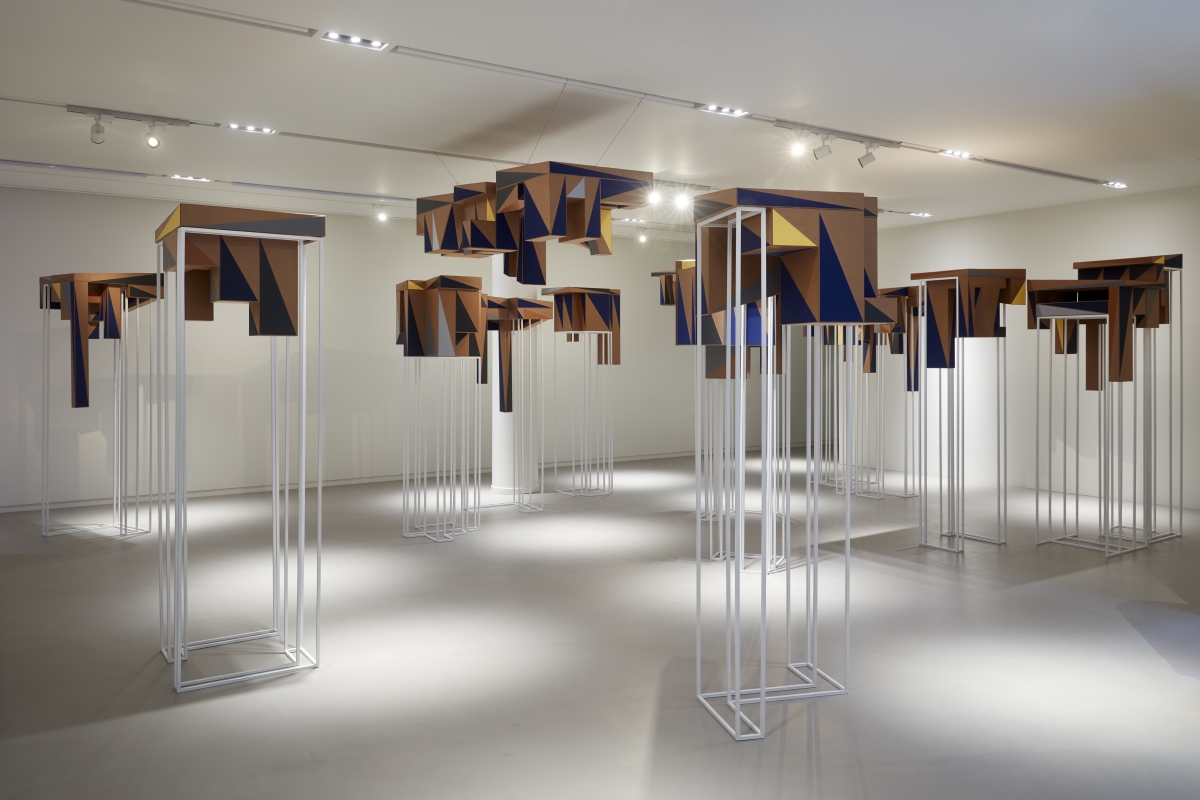
Cho Jaiyoung, The Cross Sections of the Void, Cardboard, contact paper, metal frame, Dimensions variable, 2020
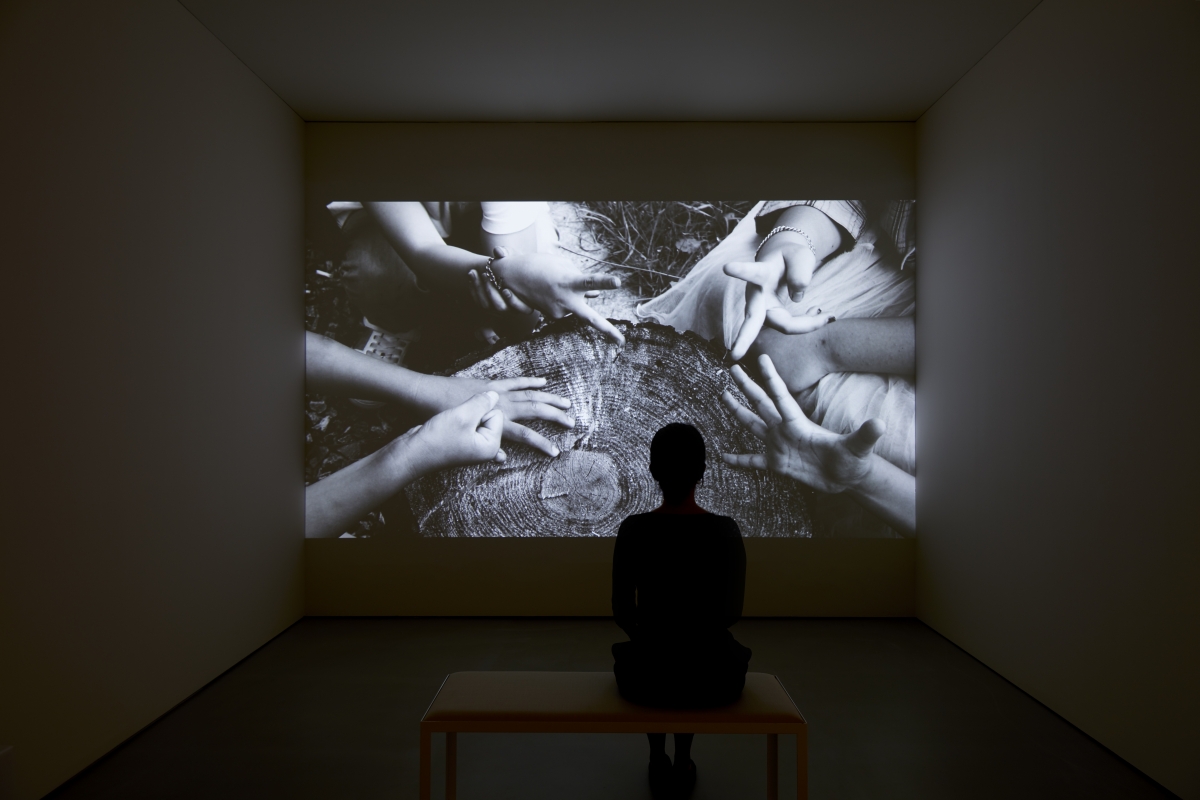
Son Kwangju, Rock Scissors Paper, Single channel video, 9min, 2020
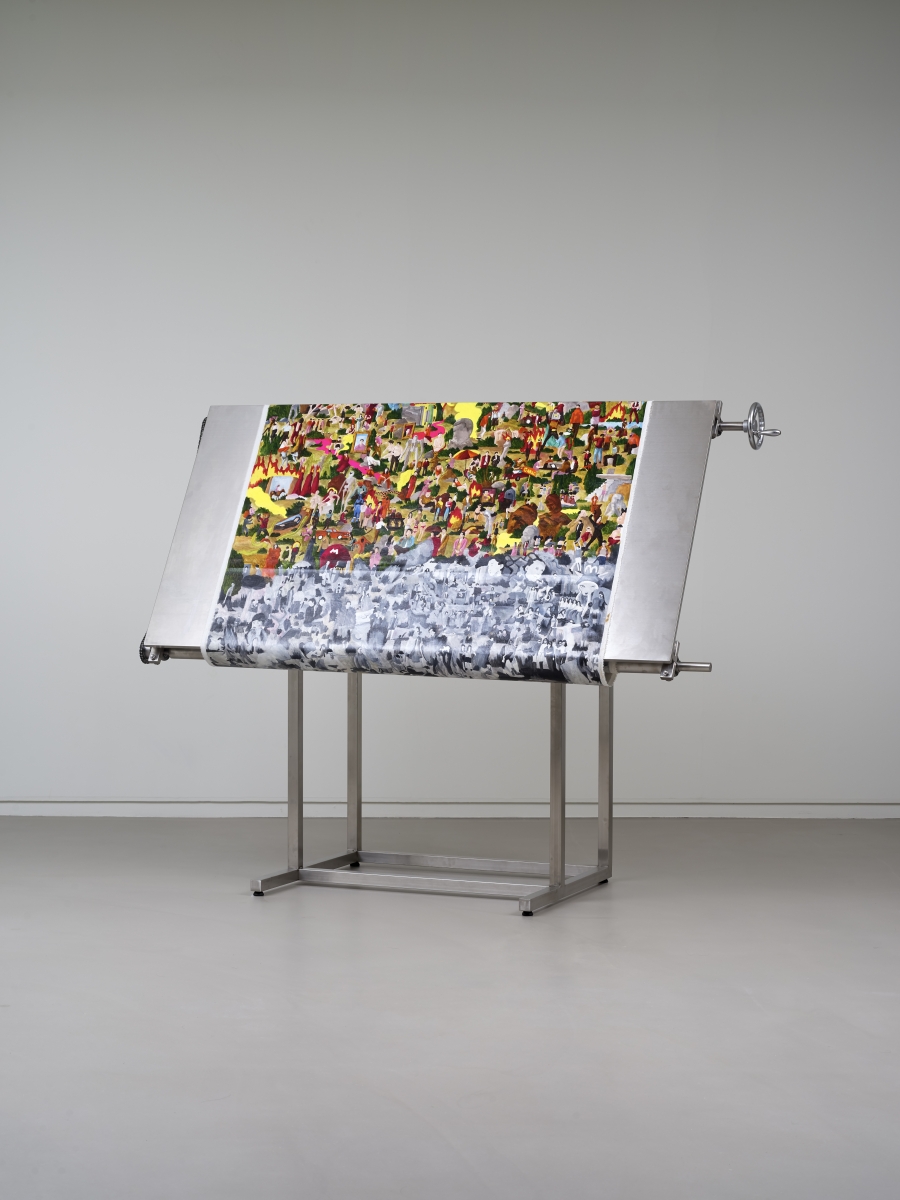
Noh Sangho, THE GREAT CHAPBOOK3 - ELSEWHERE, Paintings, mixed media, Dimensions variable, 2020
interview Ahn Soyeon artistic director, Atelier Hermès × Choi Eunhwa
Choi Eunhwa (Choi): The title of the exhibition is ‘Elsewhere’. This is an attempt to imagine somewhere else far from the reality which is often characterised as operating under an ‘urgent agenda’, ‘blocked with hurdles and boundaries’, and of ‘heterotopias formed of overlapping non-coexisting spaces’. What motivated you to curate this exhibition?
Ahn Soyeon (Ahn): It was a result of two nets crossing each other. I wanted to introduce as many ongoing works as possible, and to find and reveal meaningful commonalities between artists’ attitudes towards the contemporary era. There is a small utopian movement that seeks an alternative community and hopes to restore and strengthen human relations by questioning our systemic society and contemporary art networks. In the meantime, however, it is worth noting that contemporary artists have an indifferent yet individual attitude, and they secure their world through diligent self-exploration. In this exhibition, I tried to define and reveal how these ideas are shared between artists rather than to select artists and make my decisions based on a subject and complete a narrative.
Choi: ‘Elsewhere’ explores somewhere other than ‘now, here’. This presupposes a way of looking closely at reality and exploring where we are today. It seems to be a topic that penetrates not only the contemporary art scene but also our present reality under COVID-19. What would the ‘now, here’ look like and how would it influence our present art scene?
Ahn: The idea of ‘elsewhere’ is so fundamental that it is inseparable from any discussion of art. We have widened our horizons through countless imaginings of ‘elsewhere’. However, the non-places that have rapidly spread following globalisation, the cyberspaces that have become a parallel worlds to reality, and the severance between spaces that has emerged or become more firmly entrenched due to the present pandemic. Strange spaces and places are no longer alive only in our imaginations but are fast becoming realities. The world of ‘now, here’ is thought of as much more expansive and complex arena for young contemporary artists compared to that experienced by the older generations. Artists inspire us to face the ways we border on our reality and teach us to experience life more intensely by leading us to the outermost edges of existence.
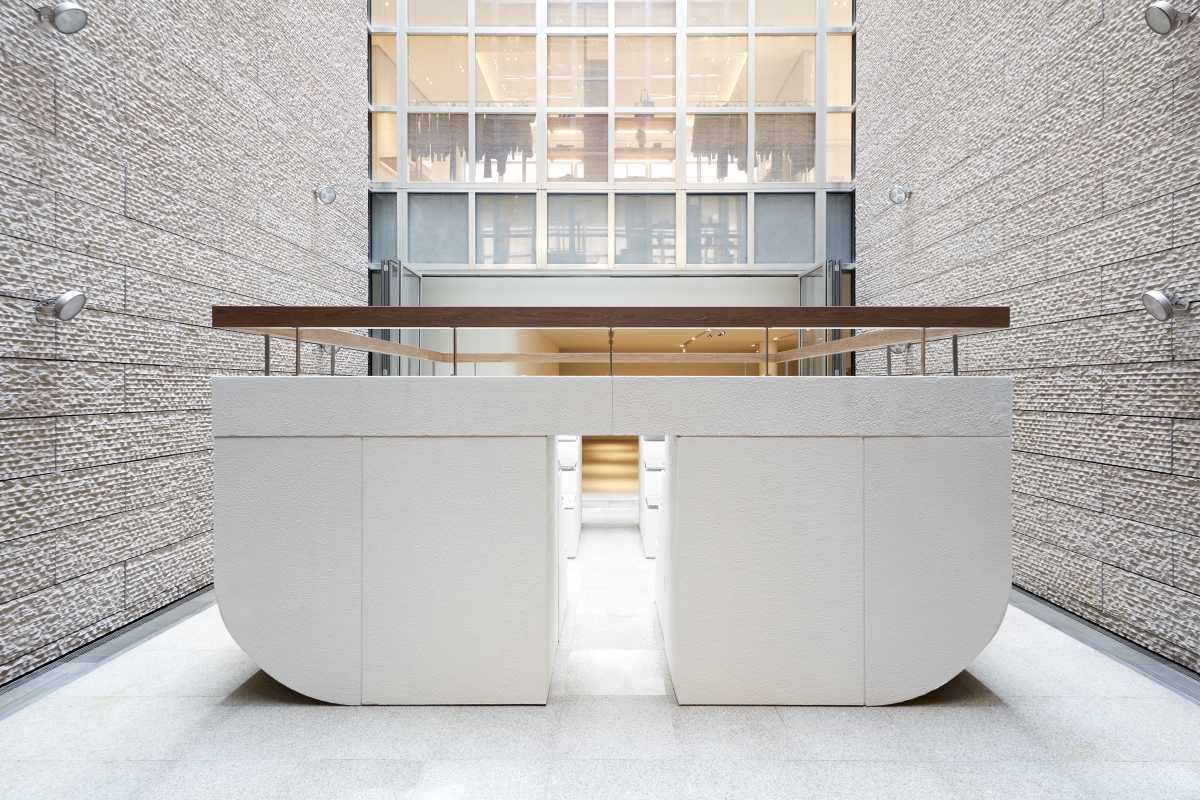
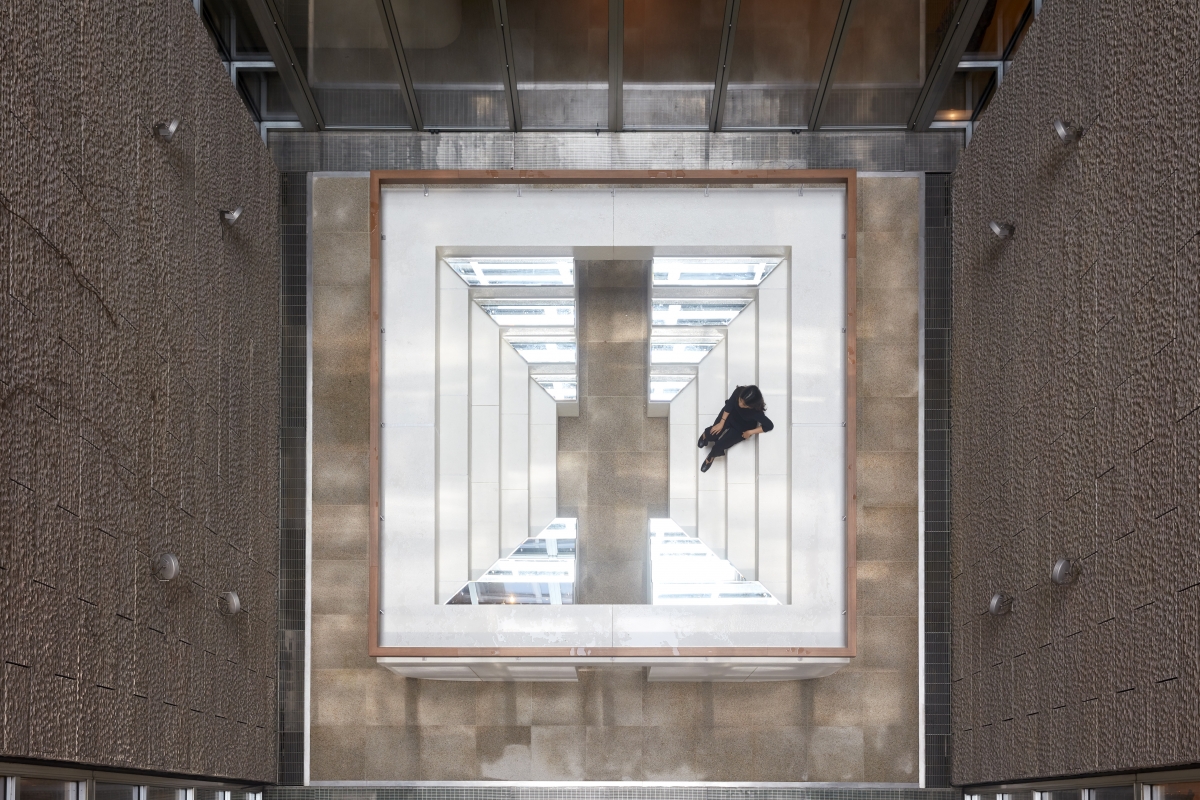
Kim Donghee, Sequence Type: 3, Plywood, waterproof coating, stainless steel, interior film, silicone, 450×450×220cm, 2020
Choi: Artworks and spaces are closely aligned in this show. Sequence Type: 3 (2020), a pavilion as well as an installation work by Kim Donghee, fills the courtyard of Atelier Hermès. What kind of experience can visitors anticipate here?
Ahn: Kim Donghee has been working hard to create temporary interventions in given physical spaces. Sequence Type: 3 is a work that attends to the spatial characteristics of the courtyard in Atelier Hermès. The square courtyard is surrounded by the exterior wall of the building and is deep like a well, but if you look up, you can see dramatic views to the open sky. He emphasised the sequence so that your visual perception changes as you move through the installations, such as taking a narrow detour along the wall or moving through low and small entrances that one must bend to move through. When you enter the structure, you experience an open space as you look down at the sky reflected in the mirror installed on the floor. This independent sculpture delicately emulates the skins inside and outside of the building and creates unexpected sense of site-specificity. The work drew various elements from the interior decoration of the brand store, from the curves of furniture and the wall corners, and the patterning in the veneer.
Choi: The background to Writing The Five Caretakers (2020), a video work by Kim Heecheon, is Atelier Hermès. The attitude of being ‘now, here’ and exploring ‘elsewhere’ seems to be intuitively incorporated in this work.
Ahn: Kim Heecheon is an artist who has been paying close attention to how changes in technology alter our perception of time and space. Kim explores how technology has the potential to change our world today. He imagined the status quo, which we can only assume is one to which we will not be able to return to as it was before COVID-19, but does not grasp the actual situation, as a ‘case of murder in a sealed room’. In the world of ‘The Five Caretakers’, written by the imaginary novelist A, the world is assumed to centre around that of a body in a closed room that cannot be accessed. The artist, who majored in architecture, replaces the gallery and café of Atelier Hermès, and the courtyard connecting them, with virtual spaces of the banquet hall, salon, and open-air terrace, respectively. Then, A, who is writing a novel, explores the space, tracing the clues of the case as a writer, reader, murderer, and detective, and records them in a time-lapse video. When using the exhibition space, Kim chose a narrow passageway rather than the main entrance and tried to reveal more about the psychological climate of our present age by creating a space in which viewers are trapped in a closed circuit by placing them within a locked room behind a screen.
Choi: Fondation d’entreprise Hermès discovers contemporary artists through the Hermès Foundation Missulsang and consistently deals with various topics and media actively discussed in the contemporary art world through multiple exhibitions. What is the purpose of continuing these activities?
Ahn: Fondation d’entreprise Hermès has long valued its tradition of drawing inspiration from artists and artisans, focusing on their imaginative powers over 190 years. While most corporations expand their marketing and ownership sectors based on art museums and collections, Fondation d’entreprise Hermès focuses on discovering and sponsoring artists. The foundation has also supported the Korean art scene through supporting individual artists and exhibitions based on the Hermès Foundation Missulsang. Hermès Foundation Missulsang, which was established in 2000, is an art award that focuses on contemporary art in earnest. Art professionals collaborate in order to select artists who will represent the time, helping to develop outstanding Korean artists. Based on this activity, Atelier Hermès acquired a gallery in 2006 and continues to support the creativity of domestic and foreign artists through organising three exhibitions a year.
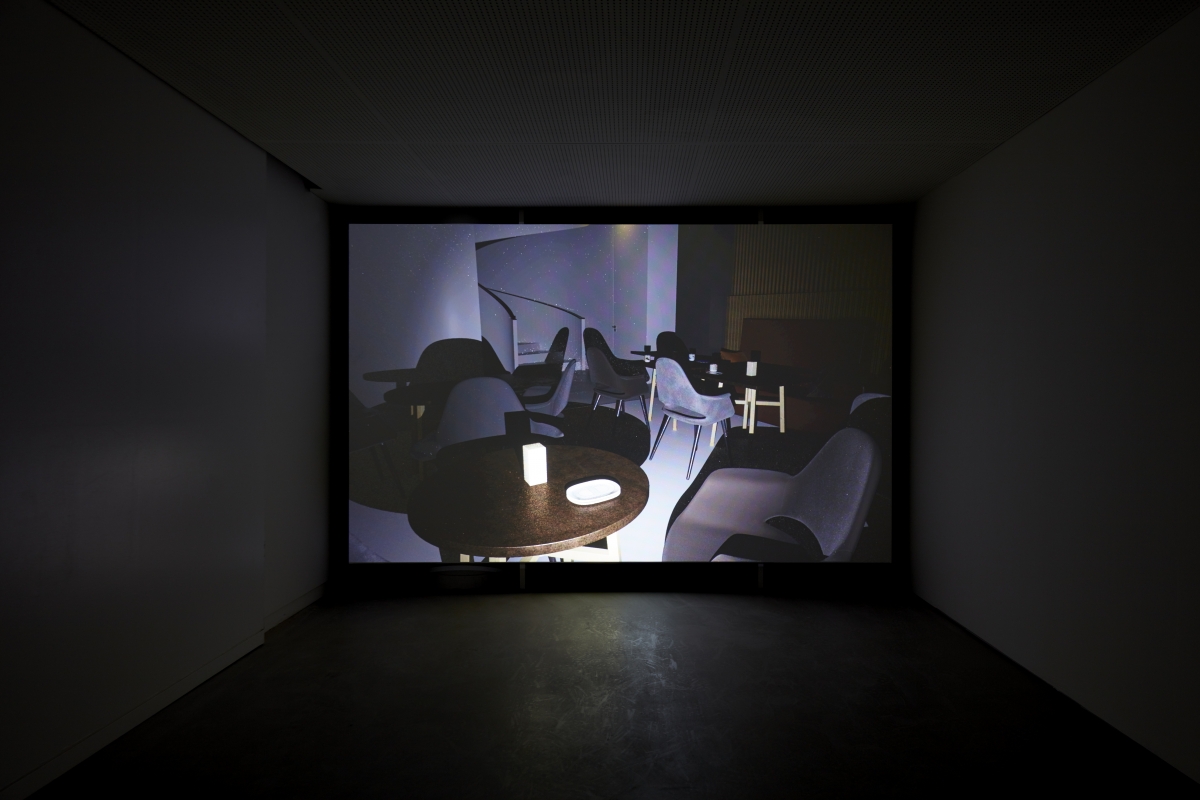
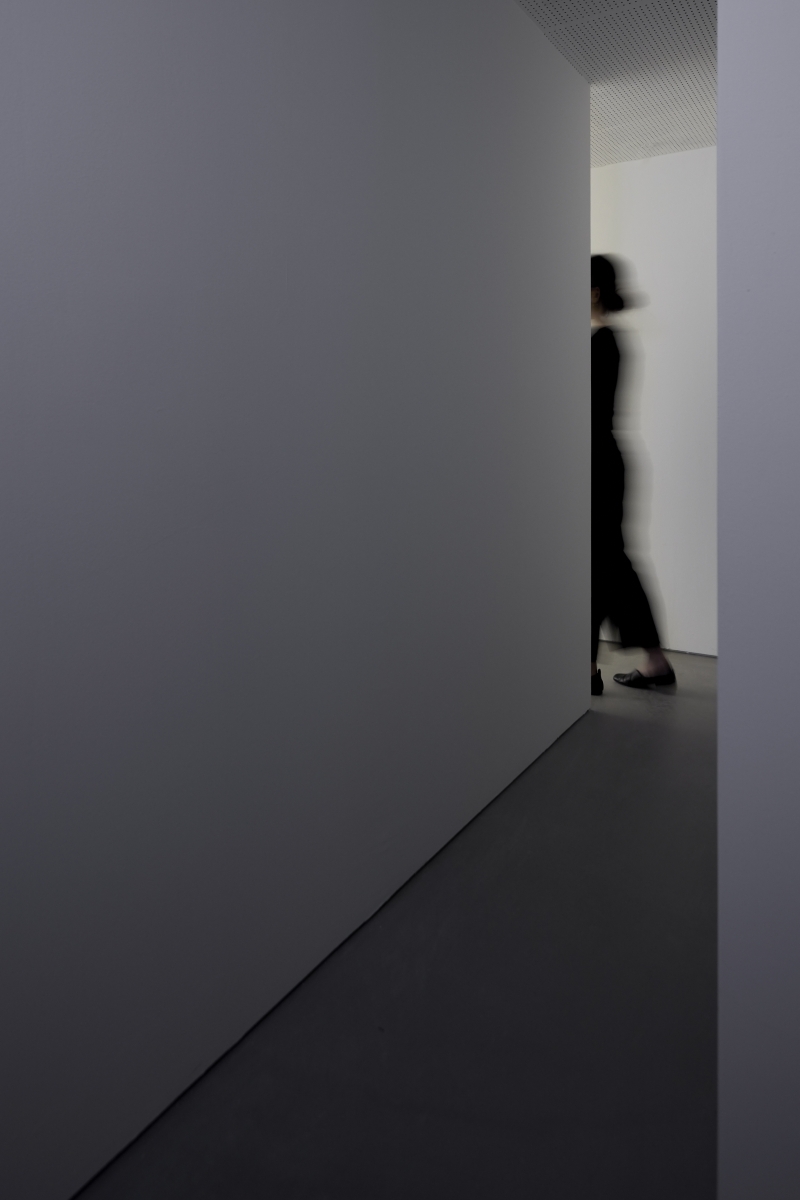
Kim Heecheon, Writing The Five Caretakers, Single channel video, 21min, 2020





